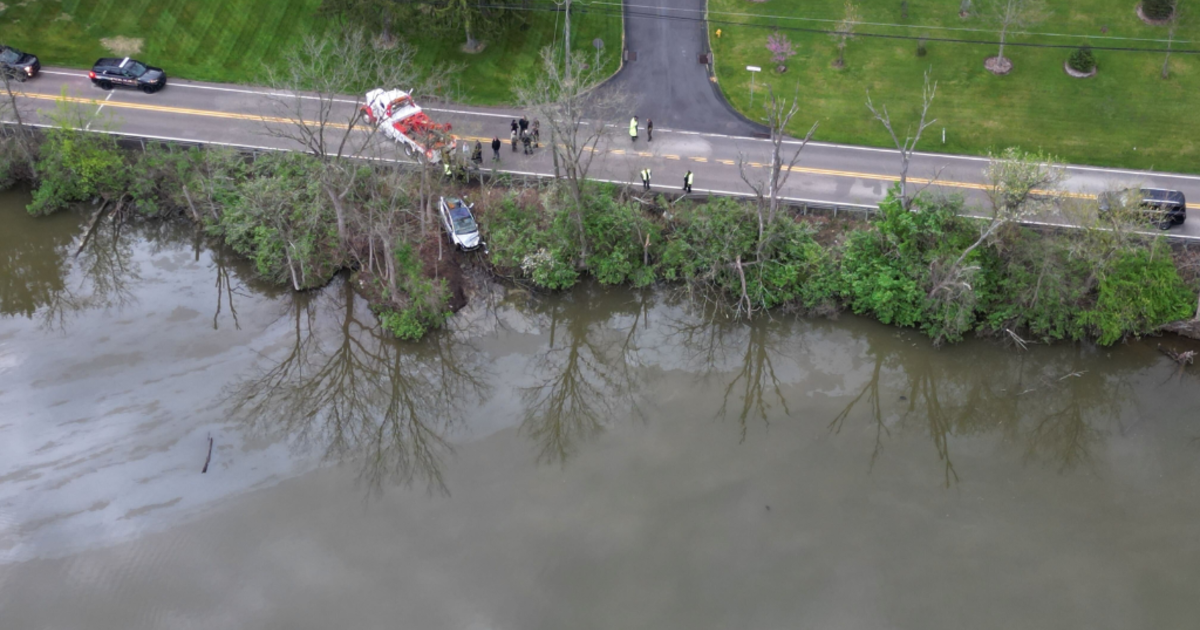Freshwater Mussel Species Found In Local River After Century-Long Absence
Follow KDKA-TV: Facebook | Twitter
AVONMORE (AP) - A Kiski Township woman's award-winning photograph is evidence that one of the most sensitive indicators of water quality - the freshwater mussel - is back in the Kiski River after more than a century.
Renowned scientist Arnold Ortmann noted in a 1909 paper that the Kiski River was in a "fearful condition" because of pollution from coal mining drainage.
Ortmann, then curator of the Section of Mollusks at the Carnegie Museum in Pittsburgh, surveyed for mussels in the early 1900s and reported ". in almost all of the drainage basins of the Kiskiminetas fresh-water life is extinct."
But during an August 2016 river cleanup, Chelsea Walker spied a freshwater mussel as she waded in several feet of water under the Avonmore Bridge to pull out illegally dumped tires.
"It was a treasure amongst the trash," said Walker, a watershed specialist with the Westmoreland County Conservation District and a volunteer board member of both the Roaring Run and Kiskiminetas watershed associations.
The water was clear that day, and Walker plunged an underwater camera into the Kiski. She shot a still photo that took best of show last month at the Pennsylvania Watershed Specialists meeting. The photo now is entered in a national competition.
"This little bit of citizen science shows the value of someone being out in nature and who happened to find something nobody knew about, and documented it," said Charles Bier, senior director for conservation science at the Western Pennsylvania Conservancy.
VIDEO SHOWS MORE
Walker also took a short video capturing the mussel doing something odd: Flapping two filaments jutting out of its shell opening that look suspiciously like small fish.
Mussels extract their food of plankton and nutrients by filtering through gallons of water so they generally don't move that much.
That is, unless the mussel is a pregnant female.
Bier said Walker's video shows a pregnant female of the genus Lampsilis, species unknown, displaying her "lures" to attract a bass - a host for her young mussels that are smaller than grains of sand.
The mussel's offspring clamp onto the bass, feed on it and eventually fall off and disperse in other parts of the river.
In fact, the mussels in the Kiski possibly got there via bass from the Allegheny River, Bier said. But only further research will determine the species, and how they got there.
MUSSEL SHELL REPORTS
The presence of mussels in the Kiski River isn't documented but is anecdotally known via researchers' reports and others finding mussel shells by chance, said Melissa Reckner of Windber, director of the Kiski-Conemaugh Stream Team.
In preparing the upcoming report "The State of Kiski-Conemaugh Watershed," Reckner said she doubts that the mussels were present in the Kiski in the 1990s and early 2000s because of water pollution - primarily acid mine drainage and sewage.
The mussel in Walker's photograph appears to be at least 7 years old, Bier said.
"The river is at least clean enough now that individual mussels are able to survive for some years, and this is good news," he said.
Better news would be if the mussels are reproducing to gain real ground for a comeback. The native freshwater mussels found in the region should not be confused with another shelled creature, the common Asian clam, an invasive species the size of a half-dollar found in many local waterways.
The Western Pennsylvania Conservancy documented native freshwater mussels in the lower Allegheny River from 2005 to 2010.
During that study, researchers found more than 1,500 freshwater mussels and 23 native species including two on the federal endangered list and at least five species of concern in the state.
Describing the Kiski River as one of the great tributaries of the Allegheny, Bier estimated about 20 species of mussels lived in the Kiski before coal mining pollution killed them more than a century ago.
Walker's photographs have piqued local scientific interest.
Next year, Eric Chapman, director of aquatic science at Western Pennsylvania Conservancy, plans to survey the Kiski River for the hellbender salamander and freshwater mussels as well, Bier said.
Reckner's upcoming report recommends conducting surveys to gauge the Kiski and the Conemaugh for potential mussel populations.
The presence, or the lack of, the mussels would provide more information on the improving water quality of the Kiski.
"People are recognizing the rivers are getting better," she said, "but they don't know by how much."
Information from: Tribune-Review, http://triblive.com
(Copyright 2017 The Associated Press. All rights reserved. This material may not be published, broadcast, rewritten or redistributed.)



